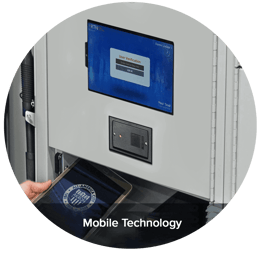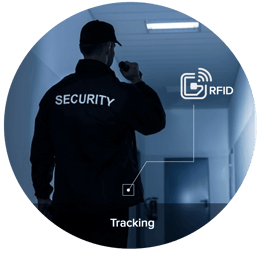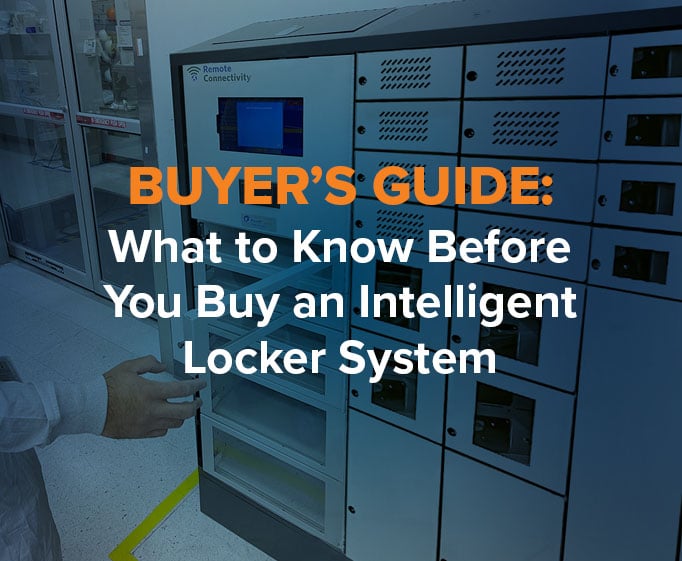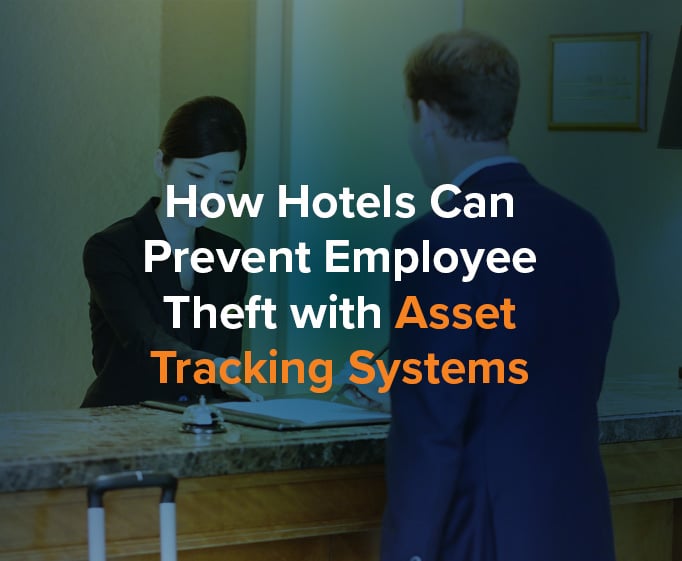By Jay Palter | May 22, 2025
As we move further into the twenty-first century, public and private prison systems across North America are starting to think differently about how they handle the housing and rehabilitation of inmates. This rethinking has inevitably brought a contentious topic from the last century back into the conversation: the use of technology in prisons.
Prisons of the future will need to provide new, better ways to manage inmates and serve corrections personnel. Correctional systems today are frequently wary of introducing new technology because of the security risks some people feel they might pose. But today’s “smart” systems offer a broad range of new capabilities, making them much better suited to corrections facilities than earlier generations of networked technology.
Today’s Prison Systems Face New Demands With Fewer Resources
Let’s first lay out some of the primary challenges prison systems face today, and then we’ll show you some of the main ways new smart prison technology can address these challenges.
Overcrowding
Prison overcrowding is one of the North American prison system’s primary problems, but this is really a global issue. Over a hundred countries worldwide struggle with overcrowding in their prisons. But of all of those countries, the United States struggles the most. Over 20 percent of the world’s incarcerated population can be found in the US.
How did this come to pass? Between 1975 and 2002, every US state adopted some form of mandatory sentencing, particularly for drug-related offenses. Overcrowding can lead to many related problems in corrections facilities, including:
- Unsanitary conditions and the spread of disease—something the public has become acuity aware of during the COVID pandemic
- Premature wear and tear on facilities
- Increased stress among inmates and corrections personnel, heightening the risk of violence
Reforming those sentencing laws would go a long way to reducing crowding in US prisons, but that will be a lengthy and often fraught political process in most states. Until that can be addressed, technology may be able to assist in managing a large incarcerated population.
Cost
Plain and simple, prisons are expensive. They may be a necessary part of civil society, but maintaining a prison system to twenty-first century standards of care carries a high price tag. For example, the Vera Institute of Justice found that 45 surveyed US state prison systems cost nearly a combined $45 billion annually. That works out to an average cost of $33,274 to house, feed, and guard each individual inmate.
Effectiveness
Limited budgets constrain prison systems, forcing them to reduce or eliminate rehabilitation programs. That inevitably drives up recidivism rates. The figures look particularly grim in the United States, where 68 percent of released inmates end up rearrested and back in the prison system. That shows a severe shortcoming in the corrections system’s effectiveness at actually correcting criminal behavior.
So what should our key takeaway be here? We believe one of them is the need for better, smarter technology to manage corrections centers. And also the need for more and better data on prisons to guide strategic decision-making. However, this need leads to our last challenge to discuss: resistance to new jail technology.
Resistance to technology
Many professionals in law enforcement think that while technology can help some aspects of their work, it is also a potential hindrance. Unfortunately, this thinking has led to broader resistance to new technologies in the prison system. For example, long a transformative force in consumer and enterprise spaces, mobile electronics are seen as a massive liability in the prison system. Many worry that their use might lead to unregulated communication between inmates and contacts outside.
So the concern about the unregulated use of technology in prisons has led to resistance. But if you scratch the surface of these concerns just a little, it becomes clear that they’re not really about the tech itself but about how it is implemented. That issue is much easier to address.
Learn About Technology Solutions for Correctional Facilities
How New Law Enforcement Technology Supports Corrections
A new perspective on technology in the prison system is needed. The latest generation of smart law enforcement technology holds the potential to transform and improve how we manage inmates and the corrections process. Technology is, of course, just one piece of the puzzle, not a silver bullet. But it is a piece that could change the prison system for the better.
Intelligent technology
“Intelligent technology” refers to a very narrow kind of computer hardware monitoring, but today it has a much broader and more interesting meaning. Today, smart technology is any system capable of monitoring itself and its environment, analyzing performance data, and modifying its performance based on those analyses.
Various buzzwords are often lumped under the umbrella of intelligent technology, including artificial intelligence (AI), machine learning, and the Internet of Things (IoT). All are individually powerful, but at a high level, should be considered together as smart technology. In prisons, smart tech can automate time-consuming or stressful work to relieve some of the burdens from corrections staff.
For example, networks of IoT devices can track critical assets as they move around correctional facilities. Or, if you want to provide staff or inmates with access to valuable equipment, you could use a smart management system to control and monitor asset transactions.
Smart prison facilities
Turning prison facilities into smart buildings is one of the primary ways we’ll see prisons improve their effectiveness in the near future—smart tech wired directly into building infrastructure to provide new insights. Networked sensors, cameras, and access control points will provide personnel with better insight into the movement of people and equipment throughout the facility. As a result, they’ll be able to identify inmate locations and movement patterns, control the flow of illicit goods into or out of prisons, and identify potentially violent situations before they erupt.
Mobile law enforcement technology
Mobile law enforcement technology both inside and outside correctional facilities can ease the burden on the prison system and its staff. Inside, corrections officers can use mobile devices to go paperless. So often, officers need to file paperwork fast. Maybe it is an urgent protective custody request or a segregation order for a violent inmate. Perhaps the district attorney’s office needs paperwork today related to an inmate for an upcoming hearing. No matter the reason, eliminating the need to manage paper records can save time, as long as you have a way to secure and manage the mobile electronics on which digital records will live.
Outside of prisons, mobile devices can help former inmates manage their behavior and reduce their chance of recidivism. For example, a court-issued mobile device or app on a personal phone could help parole officers stay in contact with parolees. It could provide a secure communication channel or a way for the parole officer to monitor the parolee’s whereabouts and intervene before entering high-risk situations.
As another example, a recent pilot study in Massachusetts found that a drug treatment app helped 30 former drug offenders stay in recovery. The app provided users with motivational messages about their recovery, treatment advice, tools, and social networking contacts to help them stay in recovery. The 30 users opened the app on average 62 percent of the days in the four-month pilot study, suggesting they found considerable value in its use.
Prison tracking systems
systems
Tagging and tracking systems, like indoor positioning systems (IPS), can help manage both inmates and guards on patrol. When an inmate enters your correctional system, you can build an individual profile for them, including such data as cell location, medical records, training, and dietary information. That data—a mobile case file—can be stored on RFID tracking tags they wear on their uniforms and monitored as they move around your prison facility. If a guard needs to pull up any information about an inmate, all they have to do is just scan their tag.
Indoor tracking systems can also monitor guards on patrol in your prison. The tracking system can automatically monitor their safety. It can also verify when they reach different checkpoints, so guards are kept accountable and can maintain situational awareness without needing to spend time logging checkpoint visits.
The Overall Value of Data Collection
You can apply next-generation technology in correctional systems today to significant effect. Data-driven, mobile, networked smart technology can help manage crowded prisons, reduce operating costs, and reduce recidivism rates. The value of this smart technology will come not only from the quantity of data they can collect but the quality. Mobile devices and tracking tags can help you gather data from previously inaccessible locations and workflows.
Better data collection and analysis mean you can address problems more quickly. That, in turn, generates new data for comparison and further analysis. This feedback loop will allow for faster improvements and better insights into the previously hidden corners of correctional facility performance that were left unobserved when only manual, human-driven data collection was possible.
These ideas are not over the horizon, wishful thinking. These are practices you can apply today. Remember, law enforcement technology isn’t a silver bullet. It is only one piece of the puzzle. But it is a piece that could change the prison system for the better.
Want to learn more about correctional facilities technology?
Read our Practical Guide to Asset & Equipment Management for Correctional Facilities
Subscribe to our blog

Jay Palter
Vice President of Marketing & Partnerships




